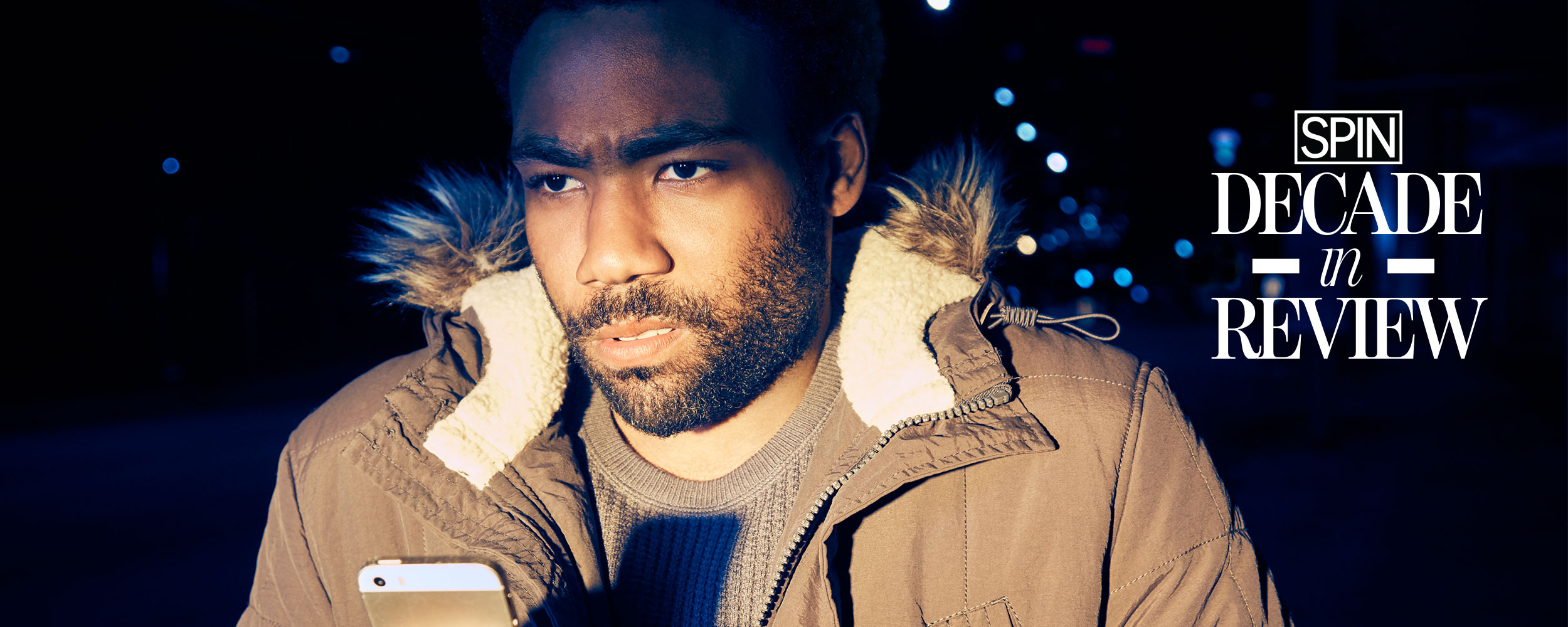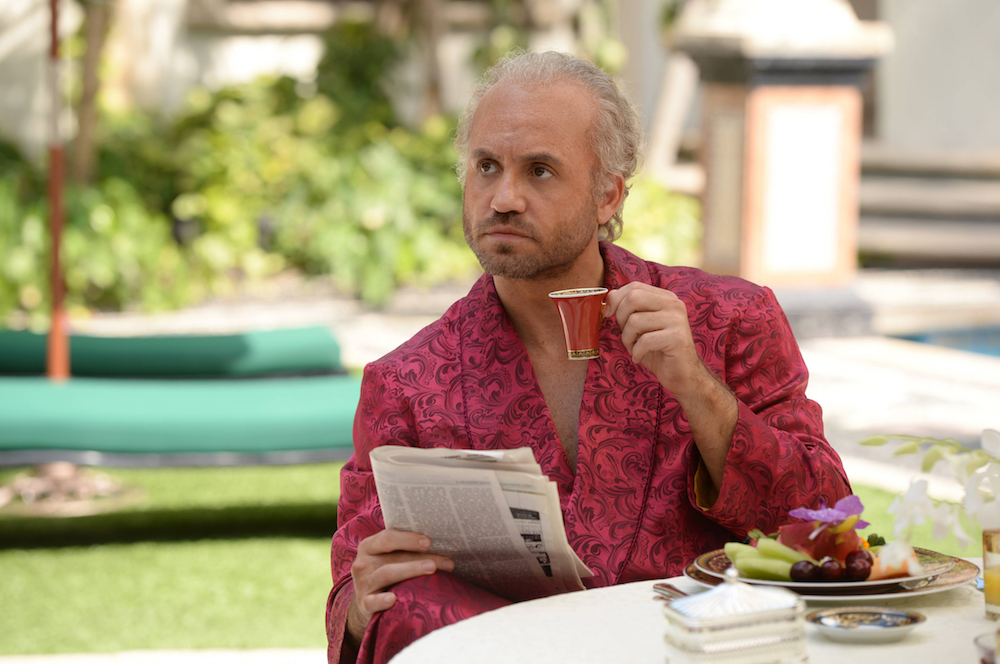It was always going to be hard for Ryan Murphy to top American Crime Story: The People v. O.J. Simpson. The first installment of his true-crime anthology benefited from singularly compelling source material and a talented ensemble cast, weaving them into a season that deftly retold the story of Simpson’s trial and recreated the complicated racial dynamics that informed both the public’s perception of the proceeding and the relationships between its key players. Murphy’s campy aesthetic perfectly lent itself to the tabloid nature of the case, something that goes ditto for the second season, The Assassination of Gianni Versace. But stylistic similarities aside, this new edition is quite a different season of television.
In the opening scenes of People v. O.J., the crime had already been committed, and the ensuing narrative focused on the courtroom drama that unfolded after. Versace begins with the crime, but then moves backward, showing the viewer in more or less reverse chronology the events that led to that moment over a period of days and years. While the late designer’s name is the one in the title, the series is really the story of two men presented in contrast to each other. Édgar Ramírez plays the late Versace as an industrious man consumed by great compassion for his family and life after contracting and recovering from HIV (a diagnosis never confirmed by the Versace family and a point of contention for them with the series). Conversely, Versace’s killer, Andrew Cunanan (Glee’s Darren Criss, in what will likely be a breakout role) is in love with the idea of a particular kind of life—the opulent, seemingly “perfect” variety Versace embodies—but disappointed by his own reality, lusting after what he believes is his entitlement rather than working to achieve it.
That theme—of doing the work—is what separates the series’ titular victim from his killer. The former is shown laboring over his designs, hoping to leave a legacy larger than himself; the latter is an intelligent but indolent loafer who constantly lies to and leaches from the people in his life until they tire of his charm offenses and cut him out. Absent any real-life explanation for his killings, the series presents Cunanan as increasingly isolated by his own actions, obsessed with Versace, and frenzied as he realizes he will never have the life he’s always envisioned for himself. He eventually snaps, setting in motion the cross country killing spree that would end in both Versace’s death and Cunanan’s by his own hand.
Structurally, this dual presentation is undermined by the fact that Cunanan killed four other people before he got to Versace, and so the narrative spends long stretches of time (and one entire episode) without checking in on the designer at all. Tonally, that also means that despite Criss’s exhilarating performance, things get pretty dark, and borderline dour, during a middle stretch of episodes focused almost entirely on the sociopathic murderer. Versace, and especially the characters who inhabit his storyline—his sister Donatella (played robustly, but with great affection, by Penélope Cruz) and long-time partner Antonio D’Amico (Ricky Martin, who lends a good deal of emotional heft to an underdeveloped role)—are sorely missed in these sections, as they provide the series with an essential bit of altruism Cunanan inherently lacks.

Also Read
30 Great TV Shows That Defined the 2010s
The Versace family has voiced their disapproval of the series, largely because it is based on journalist Maureen Orth’s book Vulgar Favors: Andrew Cunanan, Gianni Versace, and the Largest Failed Manhunt in U. S. History, which they’ve called “full of gossip and speculation.” But while there are no doubt scenes in the series that have been fictionalized for dramatic purposes, its treatment of its titular subject and his family is extremely tender. Both Versaces could have easily become caricatures, but on screen, Ramírez and Cruz turn in much more than mere impersonations.
The Versace siblings’ relationship is complex. They have strong disagreements about how to run their company (his sister’s suggestion that they produce a less-daring line of dresses for the masses results in Gianni taking a pair of shears to a design they made together) as well as their personal lives (Donatella and Antonio are not fans of each other, and in real-life she cut him out of her brother’s will). But despite their arguments, Gianni and Donatella are extremely loyal to each other, with the designer constantly encouraging his sister to pursue a higher role in the company and take it over once he has passed away. The total devotion, integrity, and realness inherent to these characters’ interactions with each other make them a joy to watch, and a necessary polarity to Cunanan’s self-absorption.
In the absence of the Versace family, any humanity missing from Cunanan is left to be provided by his other victims. While Finn Wittrock, Cody Fern, and Mike Farrell turn in empathetic performances as victims Jeff Trail, David Madson, and Lee Miglin, respectively, their characters here are mostly explored in relation to only two things: Cunanan and their sexuality. Just as racial dynamics informed People v. O.J., so too does the pervasive homophobia of the ’90s act as a lingering presence over this second season. Trail is a veteran who left the Navy because of the oppressiveness of “don’t ask don’t tell.” Madson is briefly considered a suspect in Trail’s murder at least in part because of his gayness. Cunanan’s third victim, the successful Chicago developer Lee Miglin, is portrayed as a closeted man who employed Cunanan as an escort (Miglin’s family has always maintained the killing was random), and the series implies that had Miglin been able to live openly, he and his killer may have never even crossed paths.
In contrast to O.J., however, these sorts of details rarely directly influence the action on screen. Race was ingrained in the O.J. Simpson case, with Los Angeles’ contentious history of black and white relations affecting the location of the trial, the public’s perception of Simpson’s innocence or guilt, and the appointment of defense attorneys and prosecutors. Versace’s source material isn’t as rich, and as such anyone hoping future iterations of the show will be able to examine larger themes on a micro level the way O.J. did may have to temper their expectations. Homophobia’s omnipresence certainly isn’t seen as a motivating factor for Cunanan, whose sexuality seems to be the one thing he was never very concerned with, or adept at, lying about. Instead, Murphy employs anti-gay bigotry largely for tonal purposes—as a looming, threatening force in the characters’ lives, adding to a sense of inevitable doom that presides over everything.
The Assassination of Gianni Versace is a worthy, if often grim, successor to American Crime Story’s first season. If nothing else, in its divergent examinations of Versace and Cunanan, it aptly seizes upon what makes glamour so captivating in the first place. It’s not just the ritz and wealth—it’s the sense that there are people out there, surrounded by friends and family, who are living big, loud, exciting lives. It’s the series’ contention that Versace had achieved this—but it was not the “perfect” existence as Cunanan envisioned it. It was messy. There were complications, arguments, and illnesses Versace had to deal with. But that’s just life. Cunanan thought he was being denied what he wanted, but he was actually always avoiding it.




